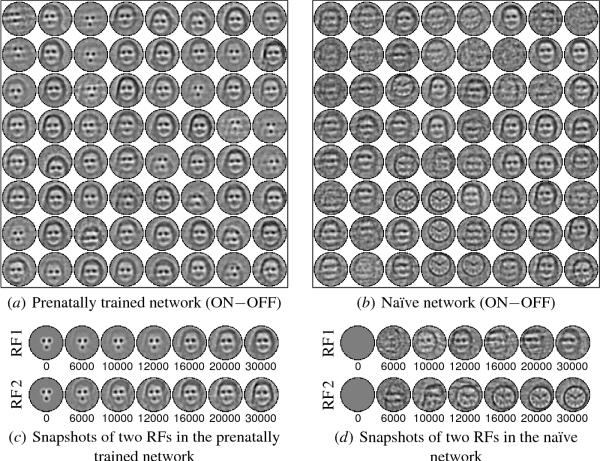
Click on the image to see a PDF version (for zooming in)
Fig. 10.15. Prenatally established bias for learning faces.
Plots (a) and b show the RFs for every third neuron from the FSA
array, visualized as in Figure 10.12a. As the prenatally trained
network learns from real images, the RFs morph smoothly into face
prototypes, i.e. representations of average facial features and hair
outlines (c). By postnatal iteration 30,000, nearly all neurons have
learned facelike RFs, with very little effect from the background
patterns or non-face objects (a). Postnatal learning is less uniform
for the naive network, as can be seen in the RF snapshots in (d). In
the end, many of the naive neurons do learn facelike RFs, but others
become selective for general texture patterns, and some become
selective for objects like the clock (b). Overall, the prenatally
trained network is biased toward learning faces, while the initially
uniform network more faithfully represents the environment. Thus,
prenatal learning can allow the genome to guide development in a
biologically relevant direction.
|